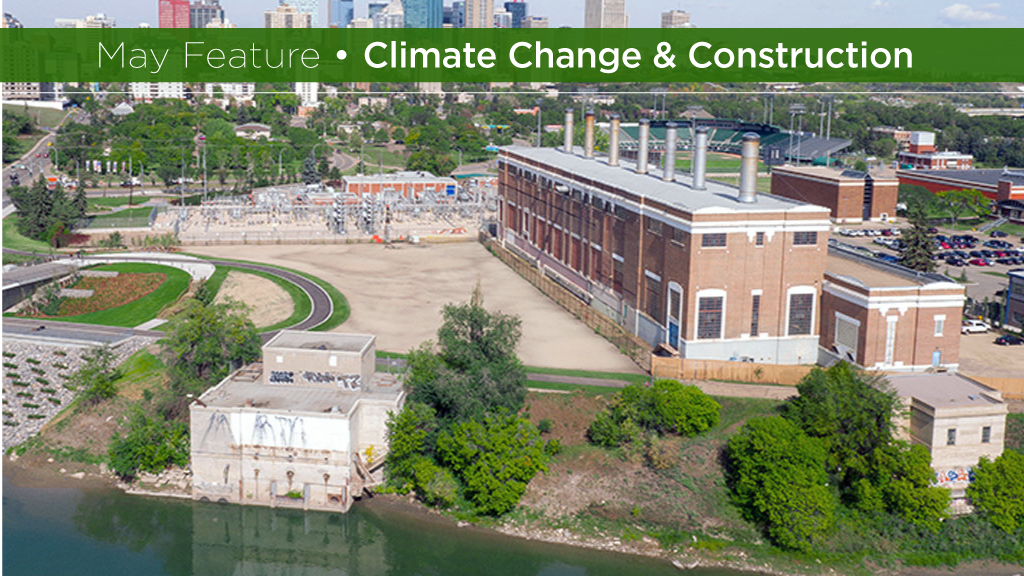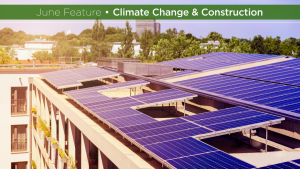Heritage buildings in Western Canada are feeling the effects of climate change. That should come as no surprise; they’ve been around a long time.
Because out west is small in population but vast in geography, the challenges posed by climate change differ in kind and severity, as well as by type of heritage building.
“The biggest change I’ve seen in Vancouver is in the weather patterns, especially in the greater amounts the intensity of precipitation,” says Donald Luxton, founding director of Luxton Heritage Consultant. “It affects the drainage of the ground at the foundations, and on the roofs. Because heavy rainfall overwhelms standard gutters, we’ve needed to install gutters with higher capacity.”
Until recently Vancouver’s hot spells have been few and far between.
“There have been heat domes forming over the city in the summer, and they have an impact,” says Luxton. “More heritage buildings in Vancouver will need to install air conditioning.”
Luxton says the key to protecting heritage buildings against climate change is a good maintenance program.
“Heritage buildings need to be well maintained, watertight and air conditioned,” he says. “In most cases installing air conditioning shouldn’t be challenging if you’re already doing other work on the building.”
Kirstin Clausen, executive director of Heritage BC, says there are heritage buildings all across the province, not just in the coastal cities, that are worth preserving.
“Unfortunately, they have been threatened by wildfire and flooding recently,” says Clausen. “There was the Lytton fire in 2021 and the Fraser Valley flood later that year.”
The village of Lytton was founded during the Fraser Canyon gold rush of 1858–59 and was one of the first places settled by immigrants in the southern interior.
The wildfire started in the early evening of June 30, 2021. Lytton had been setting temperature records in the previous days, including reaching 49.6 °C, the highest temperature ever recorded in Canada.
The fire destroyed much of the village and killed two people.

It was just one of the wildfires in B.C. that summer, caused in part by an intense heat wave across Western Canada.
Further south, some of B.C.’s original settlements are in the Fraser Valley.
Flooding in November and December 2021 cut off Vancouver from the rest of the province.
The flooding and mass destruction was caused by an atmospheric river which brought heavy rain to southern B.C. and the northwestern United States.
The rains broke a total of 20 records across British Columbia.
The climate is changing on the other side of the mountains, too.
Livia Balone, the City of Edmonton’s acting director of environment and climate resilience, says the city has identified four major climate change impacts: changing temperatures, changing precipitation, changing weather extremes and changing ecosystems.
Balone says Edmonton is expected to have drier summers, wetter winters and more heavy rainfall.
“Edmonton is in one of the fastest warming regions in the world,” she says. “In the future we can expect hotter and drier summers, and more days of extreme heat. Winters in Edmonton are also warming at a faster rate than any other season.”
David Johnston, Edmonton’s principal heritage planner, says the city has an inventory of about 900 heritage properties, plus 184 in the Municipal Historic Resources Register that are legally protected.
Johnston says the neighbourhoods of the city that are most vulnerable to the effects of climate change are the old communities of Rossdale, Riverdale and Cloverdale, which lie on the floodplain of the North Saskatchewan River, which flows through the city.
“The rest of the city sits on land far above the river valley and is in no danger,” he says.
Edmonton’s heritage program has been engaging with climate adaptation, he says.
“There is an argument for preservation that it is also good for sustainability,” says Johnston. “They go well together.”
Like Edmonton, Calgary has many heritage buildings.
Josh Traptow, CEO of Heritage Calgary, says the city has been experiencing more violent summer rain and hailstorms.
“In June 2013, the huge flood of the Bow and Elbow rivers, caused by heavy rain, damaged many properties on the floodplain,” says Traptow.
“Our heritage buildings are going to need stronger cladding and roofing materials if they are going to continue to survive.”
Heritage Winnipeg Corporation executive director Cindy Tugwell says there have been some examples of extreme weather in Manitoba in recent years, but they haven’t followed a discernible pattern.
“Climate change is showing that the greenest building is an existing building,” says Tugwell. “Heritage buildings need to be maintained in their original condition or put to a new use.”











Recent Comments